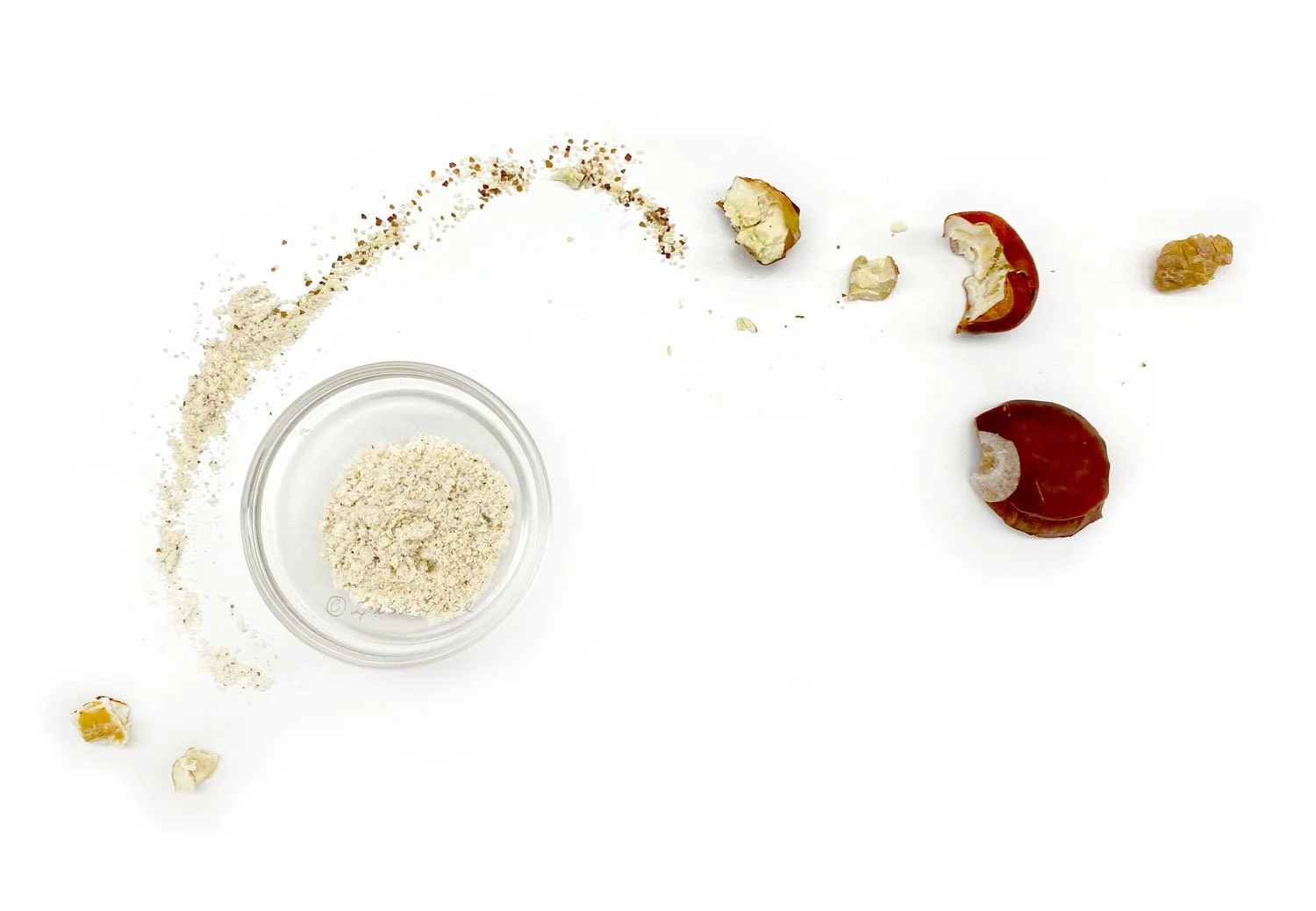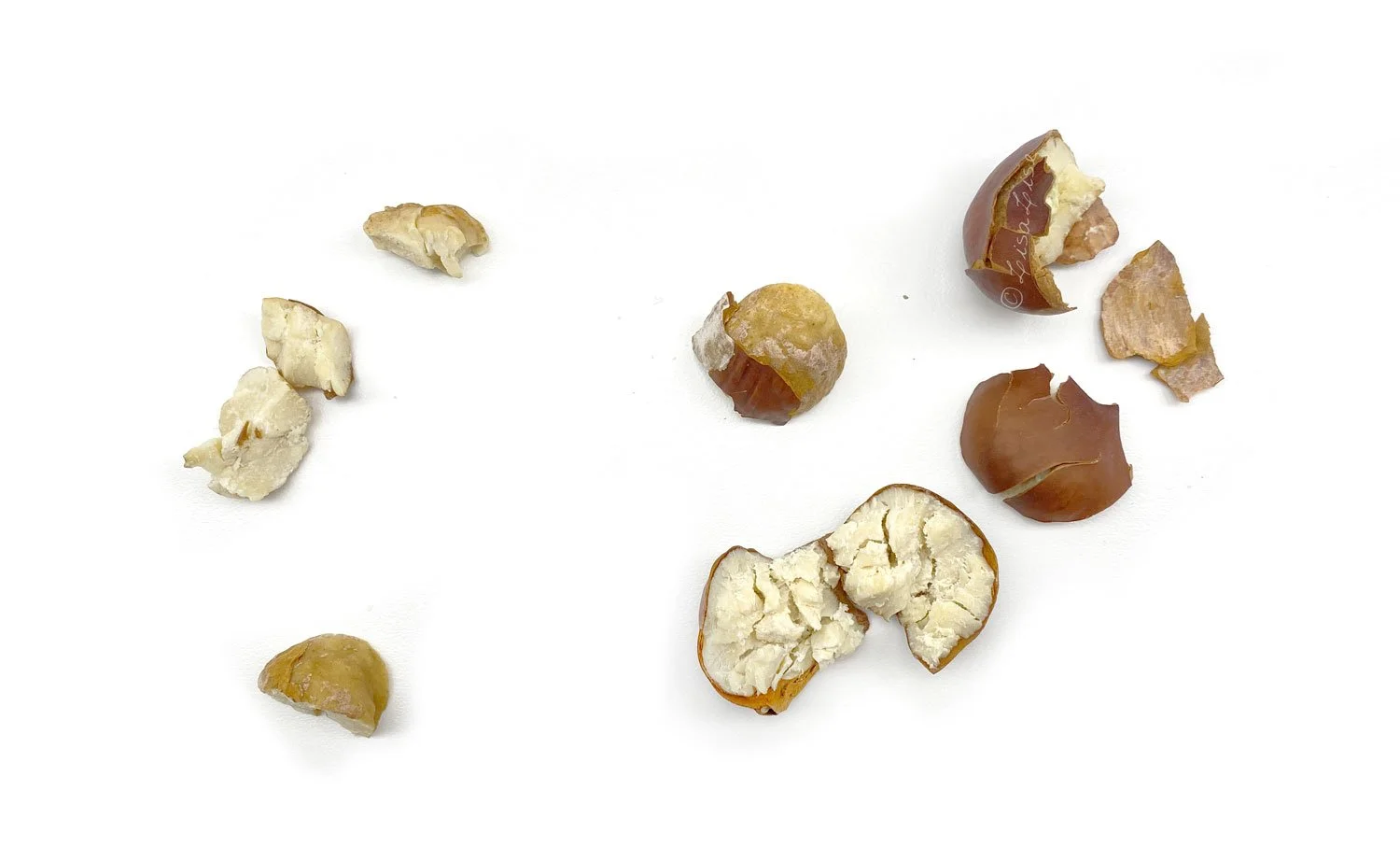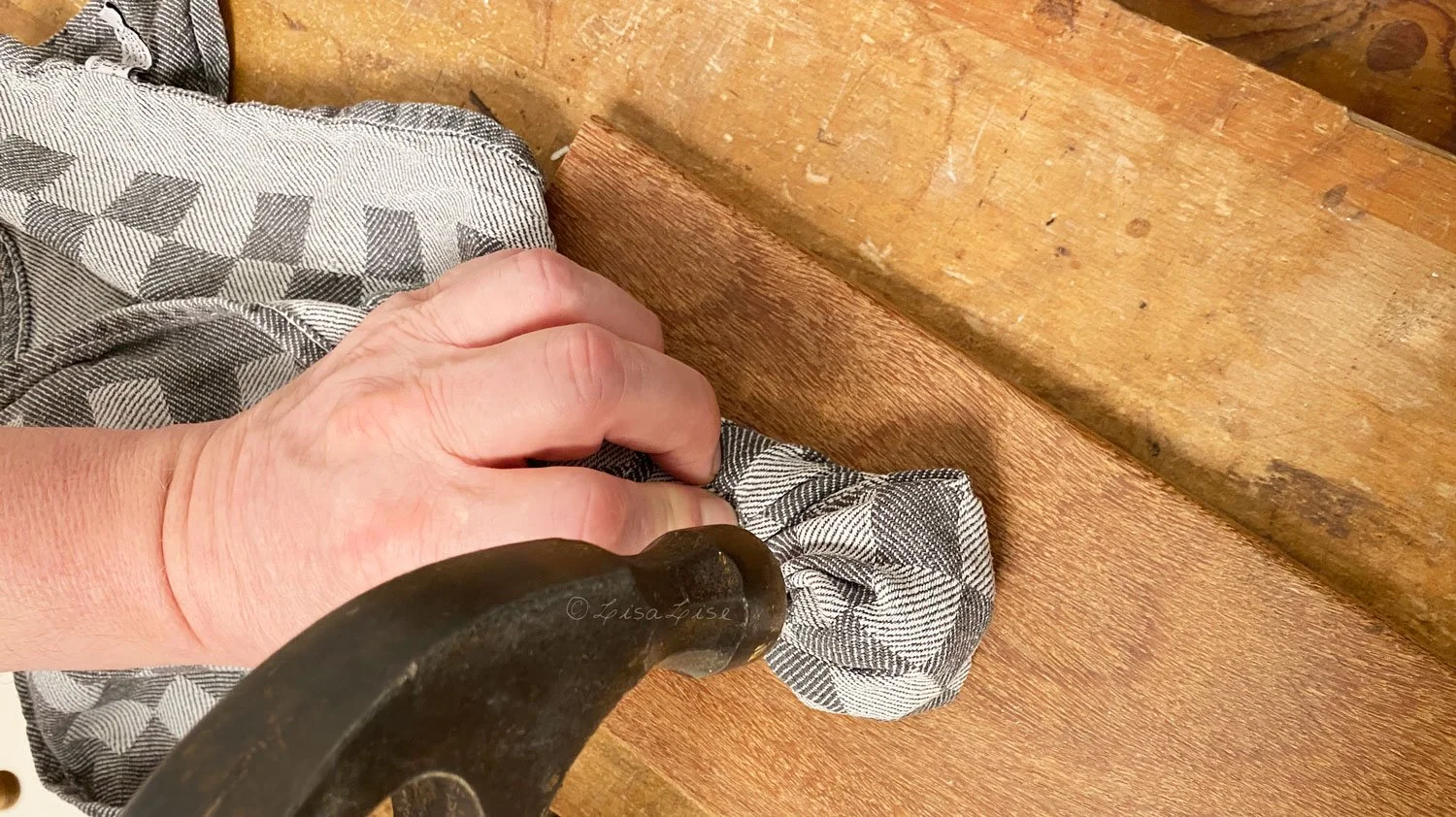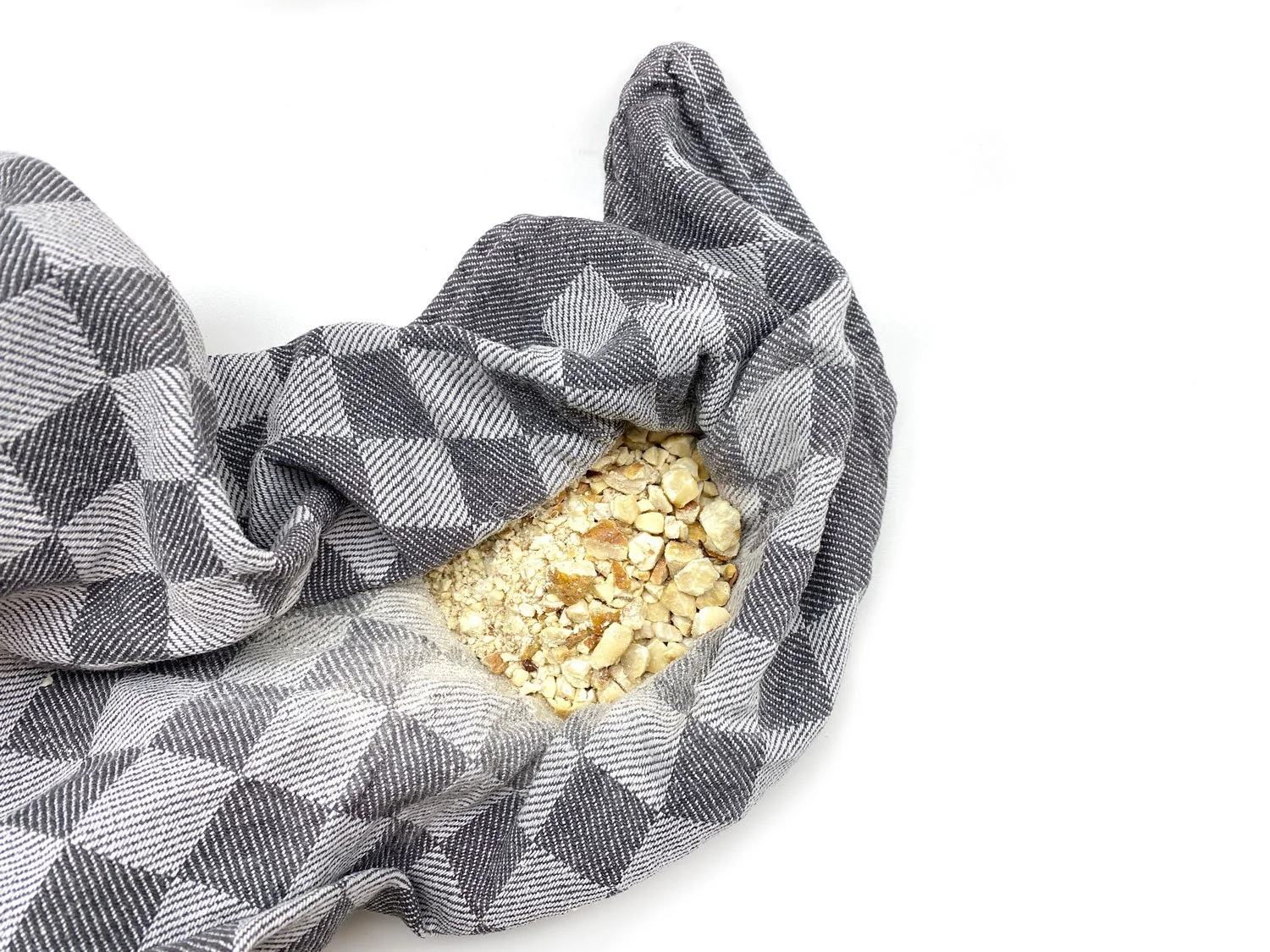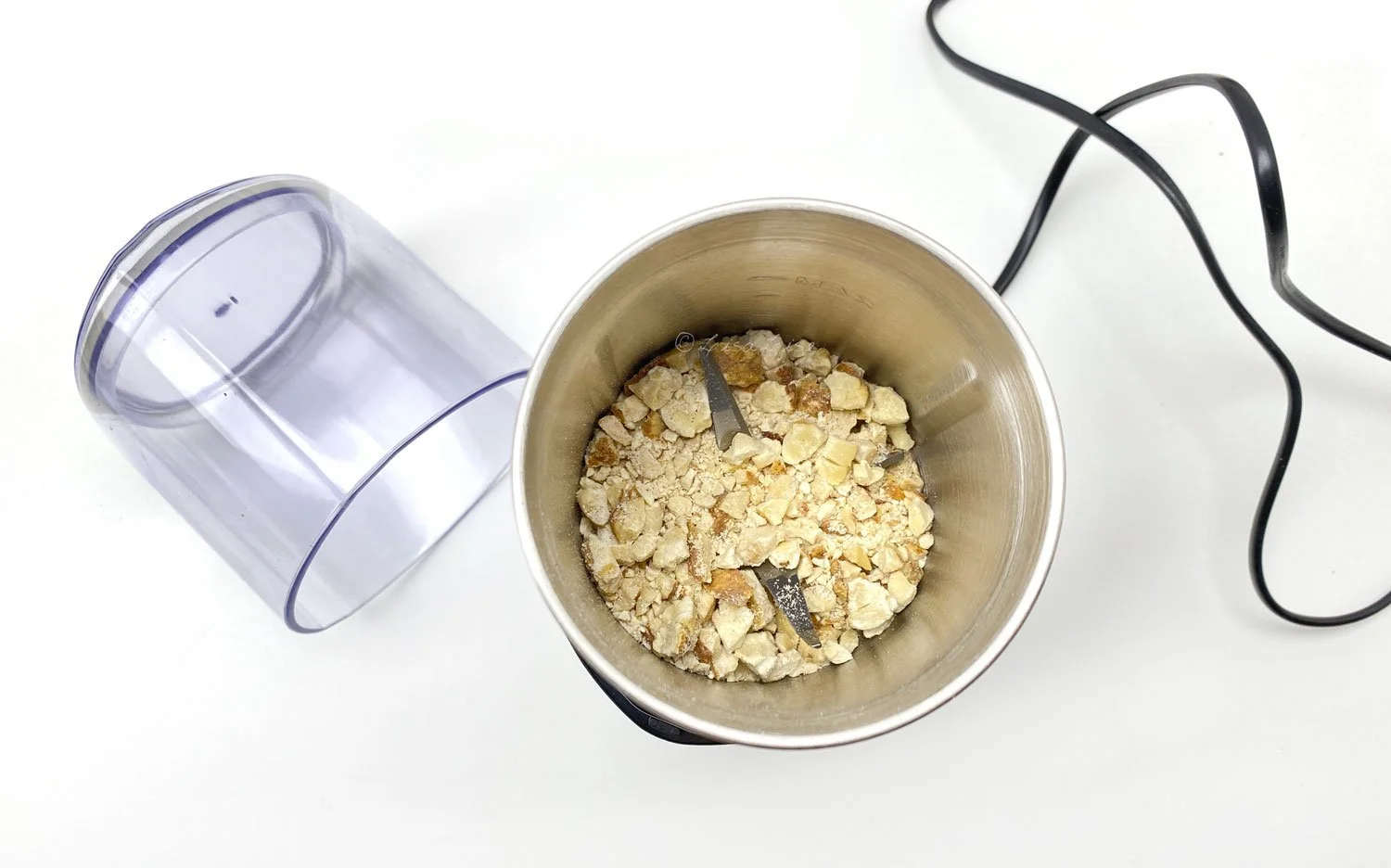How to Make Conkers Powder
Lise
Last Fall, I got busy collecting and drying conkers so I could play around with some of the different possibilites these all natural saponin-rich plants have to offer.
In this post, I showed you how to use the fresh (or dried) nuts as a laundry detergent. Today, we’re going to make conkers powder. Why do we need conkers powder? Think cleansing bars, shampoo bars, cleansers, masks, scrubs and more.
Although this is a teensy bit labour intensive, it is the kind of thing you can make in ‘larger amounts’ and then store to be used as needed.
Not to Be Confused with Chestnuts
Conkers are also known as Horse Chestnuts. Their botanical name is Aesculus hippocastanum. TIP: Don’t confuse conkers with edible chestnuts: castenea sativa. These are not the same plant and cannot be interchanged.
Step 1: Shell and Dry Conkers
To make conkers powder, you will need thoroughly dried conkers. This can be done by removing the outer hull, lightly crushing/breaking up the conkers, and placing them on a baking tray. Leave in the oven on low heat for a few hours until fully dry.
I have found that the thin brown outer layer can to some degree be peeled away during the initial processing, but this is not strictly necessary. In some instances, it will fall away as the nuts dry, but some can be almost impossible to remove. The more of the brown layer that can be removed, the smoother the result. If you can’t get the brown off, don’t worry about it — much can be sifted out at the end.
Above: lightly crushed dried conkers - ready to be processed.
Step 2: Whack Conkers
This can be done with any number of whacking implements. In this batch, I have employed my husband and his precision-whacking hammer.
To contain as much as possible, place the conkers in a tightly woven clean cloth, twist shut, place on a hard surface. Note: dried conkers are VERY hard and the act of whacking them can mar kitchen surfaces, so do take care to protect your tables/countertops.
The conkers need to be broken up as much as possible without pulverising them completely. Here’s what this batch looked like after whacking.
Step 3: Grind Conkers
If you happen to have a home-sized flour mill of some type, you might try placing the wacked conkers in the mill for final processing. This is something I have been trying to find in a decent (read: small enough) size for my own needs). If you don’t have a flour mill, use a dedicated coffee grinder for this next step.
Place the whacked conkers in the grinder. Start by pulsing several times, then grind as finely as possible.
Step 4: Sift Conkers
Depending on how much of the brown layer was attached to your conkers, this step may take a shorter or longer time.
Finish by passing the ground conkers through a sieve a couple of times to get as smooth a powder as possible. Any leftovers (like you see pictured below) can be used as a laundry detergent (see this post)
Step 5: Store Conkers Powder
Find a suitable airtight container for your and store the powder dry and out of direct sunlight.
Next Up
Next time we look at conkers, we’ll use the powder to make a shampoo bar.
Want to read more about natural cleansers on the blog? Check the selection of posts below.

